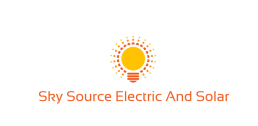Harnessing the power of the sun to generate electricity for your home is becoming increasingly popular and environmentally responsible. Installing solar panels, however, is a significant undertaking that requires careful planning and execution. This article will guide you through the essential steps involved in installing solar panels, from initial assessment to post-installation maintenance.
1. Assessment and Planning: Laying the Foundation for Success
Before you even think about purchasing panels, a thorough assessment is crucial. This phase involves evaluating your home’s energy needs, available roof space, and local regulations.
- Energy Consumption Analysis: Determine your average monthly energy consumption. Utilize your utility bills for the past year to identify peak usage times and typical energy demands. Tools like online calculators can help estimate the potential energy savings from solar. For example, a home with a high summer electricity bill due to air conditioning use might benefit significantly from solar panels.
- Roof Assessment: A professional roof inspection is vital. The roof’s structural integrity, angle, and shading are critical factors. A steep, south-facing roof with minimal shading will maximize solar panel efficiency. A flat roof might require specialized mounting systems. Consider potential obstructions like trees or nearby buildings that could cast shadows. A qualified roofer can assess the roof’s load-bearing capacity to ensure it can support the weight of the panels and mounting hardware.
- Local Regulations and Incentives: Research local building codes and regulations regarding solar panel installations. Many municipalities offer incentives, rebates, or tax credits to encourage homeowners to adopt solar energy. These incentives can significantly reduce the upfront cost of the project. For instance, some areas offer rebates for specific panel types or installation methods. Understanding these regulations is essential to avoid delays or penalties.
- System Sizing: A qualified solar installer will conduct a site survey and determine the optimal size of the solar panel system for your home. This involves considering factors like energy consumption, panel efficiency, and available roof space. A larger system will generate more electricity but may also require more upfront investment. A smaller system might be more suitable for homes with lower energy consumption.
2. Choosing the Right Solar Panel System
Selecting the appropriate solar panel system is a critical decision. Factors to consider include:
- Panel Type: Monocrystalline, polycrystalline, and thin-film panels offer varying levels of efficiency and cost. Monocrystalline panels are generally more efficient but can be more expensive. Polycrystalline panels are a more cost-effective alternative, while thin-film panels are suitable for specific applications. Research the long-term performance and warranty of each type.
- Inverters: Inverters convert the DC electricity generated by the panels into AC electricity usable by your home. Different types of inverters (string, micro-inverter, and power optimizers) have varying efficiency and capabilities. Choosing the right inverter depends on the specific panel configuration and the complexity of your roof’s shading.
- Mounting System: The mounting system securely attaches the panels to the roof. Various options exist, each with its own pros and cons, including fixed-tilt, adjustable, and ground-mount systems. The mounting system should be designed to withstand extreme weather conditions and accommodate the panel’s weight.
- Battery Storage: If you want to store excess solar energy for use at night or during grid outages, consider battery storage. The cost and capacity of battery systems vary.
3. Hiring a Qualified Installer
Selecting a reputable and experienced solar installer is paramount. Look for installers with a strong track record, proper licensing, and insurance.
- Referrals and Reviews: Seek recommendations from friends, family, or online reviews. Check the installer’s reputation and experience.
- Licenses and Certifications: Verify the installer’s licenses and certifications to ensure they are qualified to perform the installation.
- Warranty and Guarantees: Inquire about the warranties offered on the panels, equipment, and installation work. A comprehensive warranty protects you in case of defects or performance issues.
4. Installation Process
The installation process typically involves several stages:
- Roof Preparation: The installer will prepare the roof surface for mounting the panels. This may involve cleaning and inspecting the roof to ensure it’s suitable for the weight of the system.
- Mounting System Installation: The mounting system is carefully installed on the roof, ensuring proper alignment and stability.
- Panel Installation: The solar panels are connected to the mounting system and wired correctly. Electrical connections are made with high-quality materials to ensure safety and efficiency.
- Inverter Connection: The inverter is connected to the panels and the electrical system of your home.
- Testing and Commissioning: The entire system is tested to ensure proper functionality. The installer will perform final checks and adjustments.
5. Post-Installation Maintenance
Regular maintenance is crucial to ensure the long-term performance of your solar panel system.
- Panel Cleaning: Cleaning the panels regularly removes dirt and debris, which can reduce efficiency.
- System Monitoring: Utilize monitoring tools to track energy production and identify any potential issues.
- Routine Inspections: Schedule annual inspections with your installer to identify and address any potential problems.
Conclusion
Installing solar panels is a significant investment that requires careful planning and execution. By following these steps, you can make informed decisions, choose the right system, and ensure a successful installation. Remember to research local regulations, choose a qualified installer, and prioritize post-installation maintenance to maximize the return on your investment and contribute to a more sustainable future. The benefits of solar energy extend beyond reduced electricity bills; they also contribute to a cleaner environment and a more secure energy future.

Recent Comments